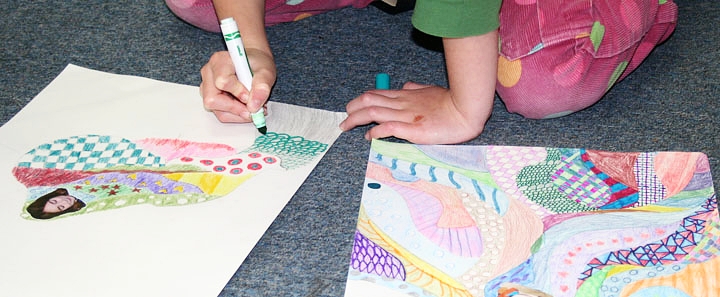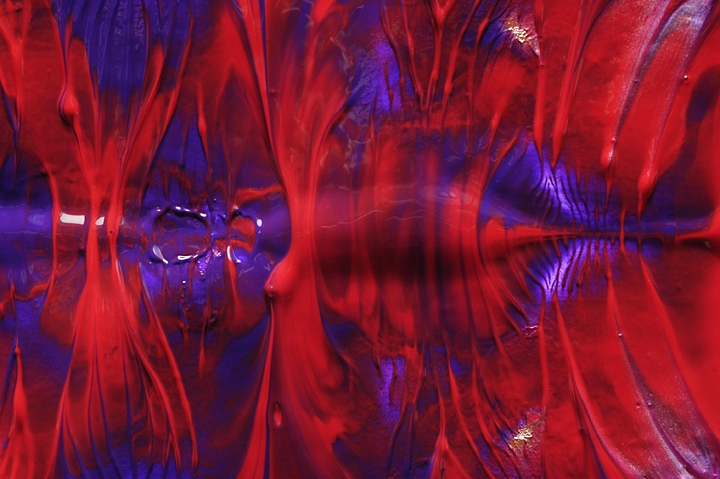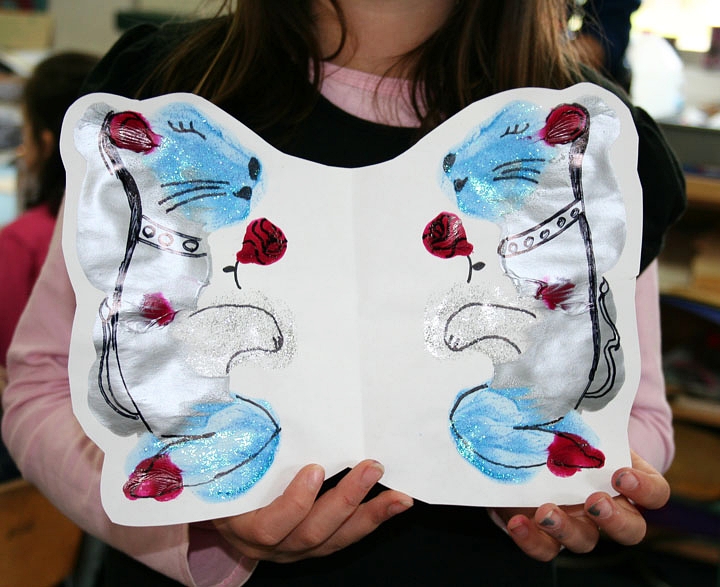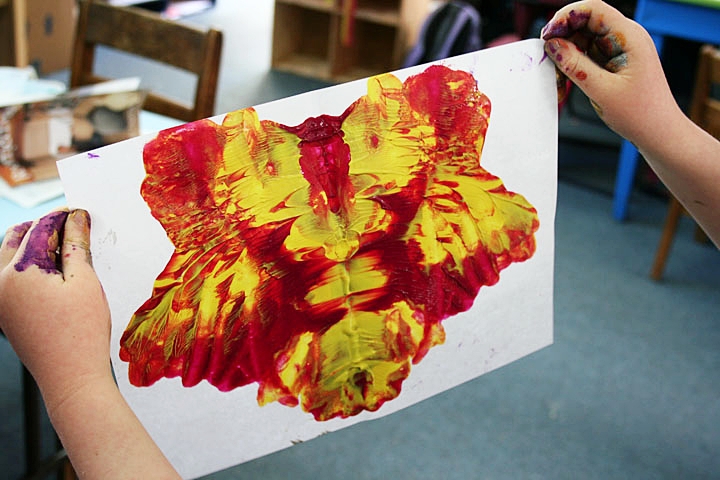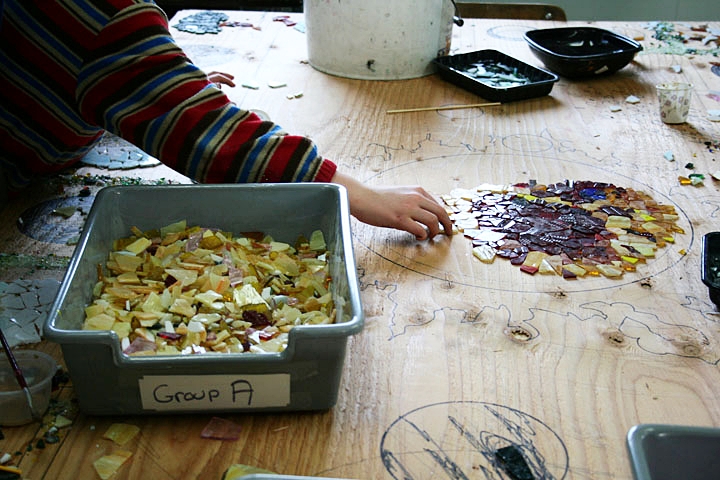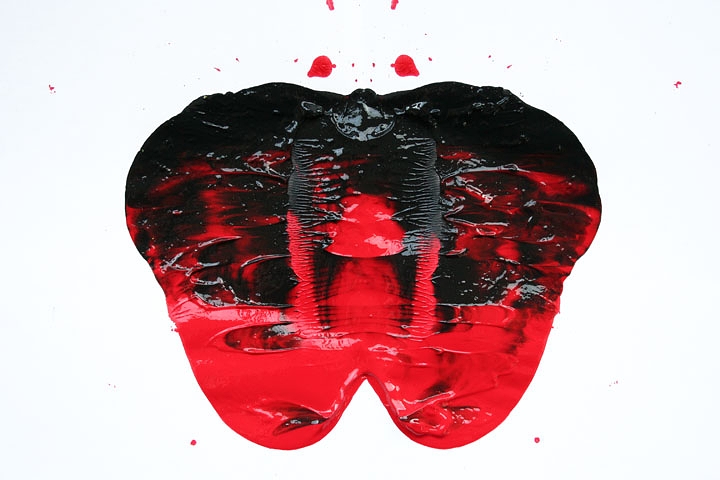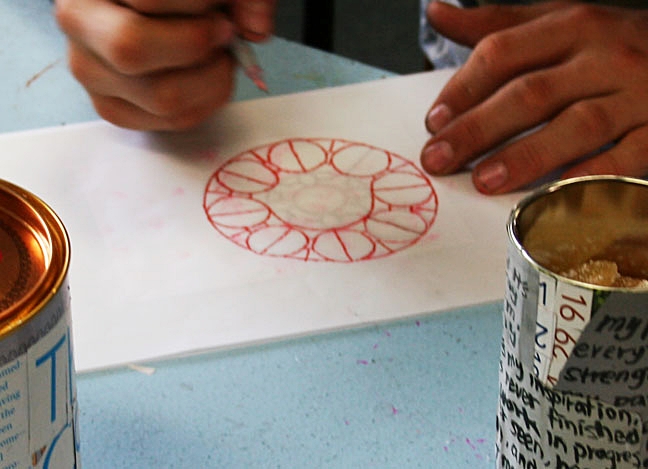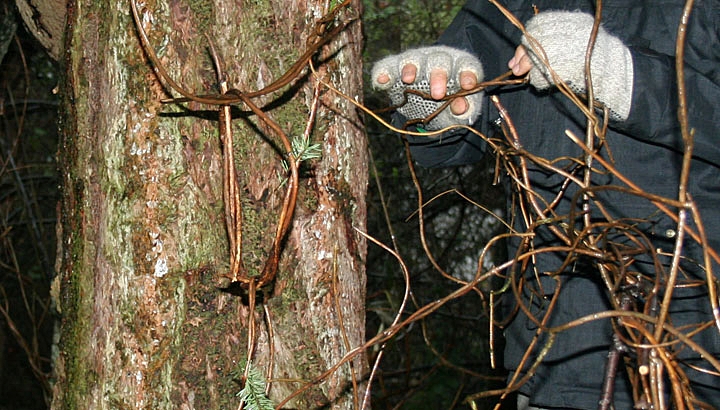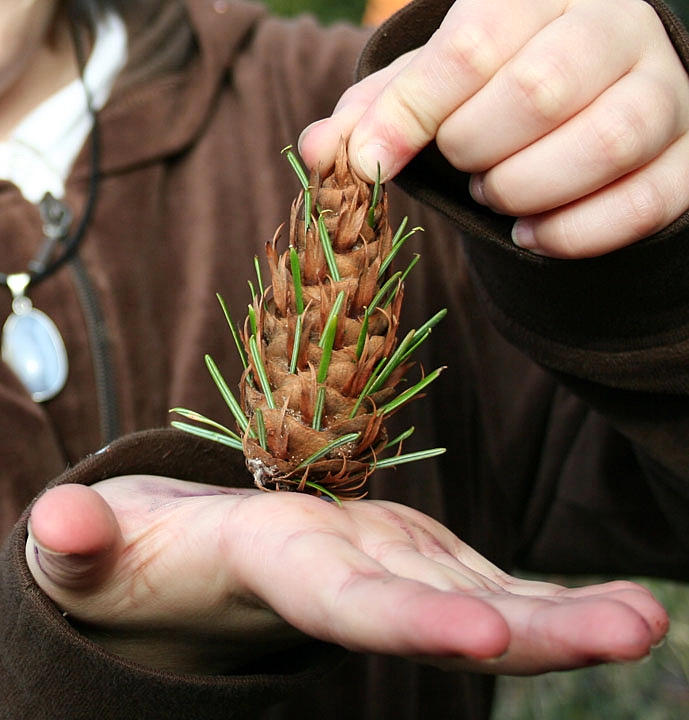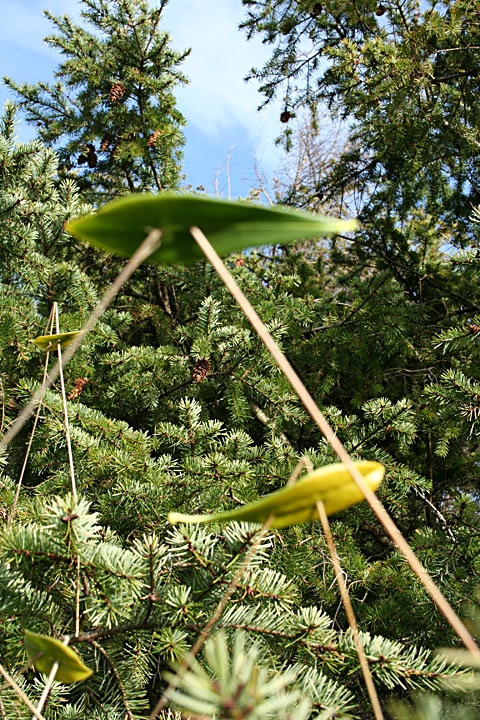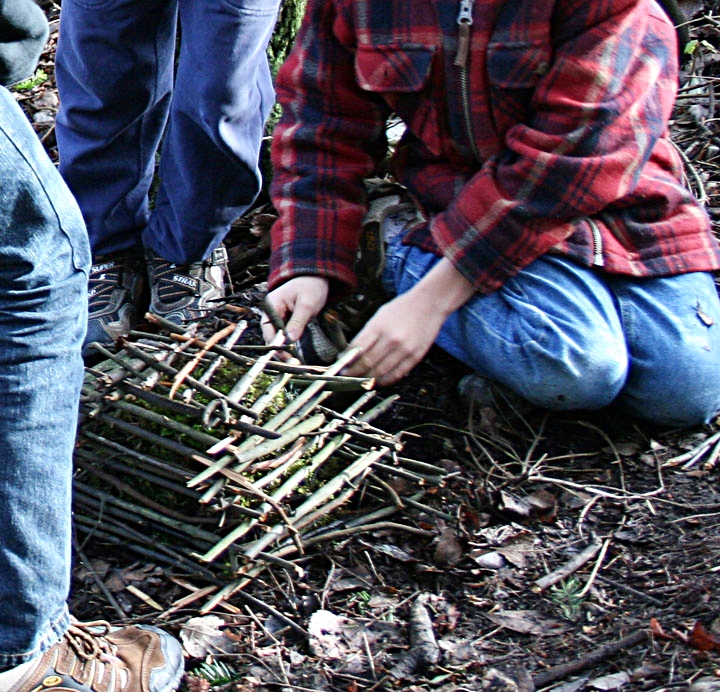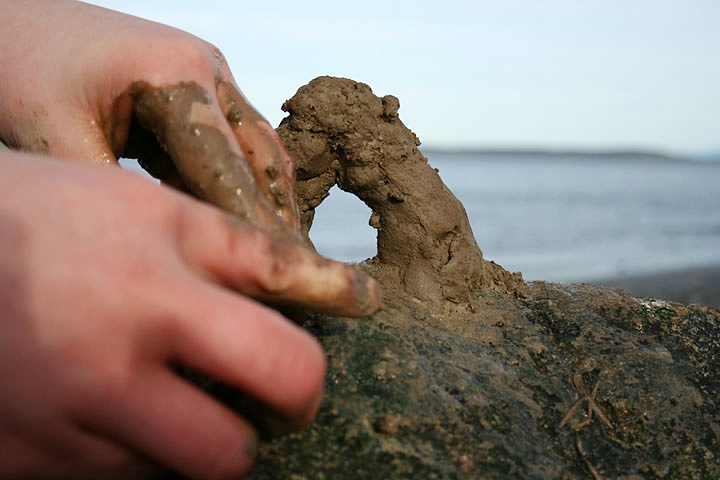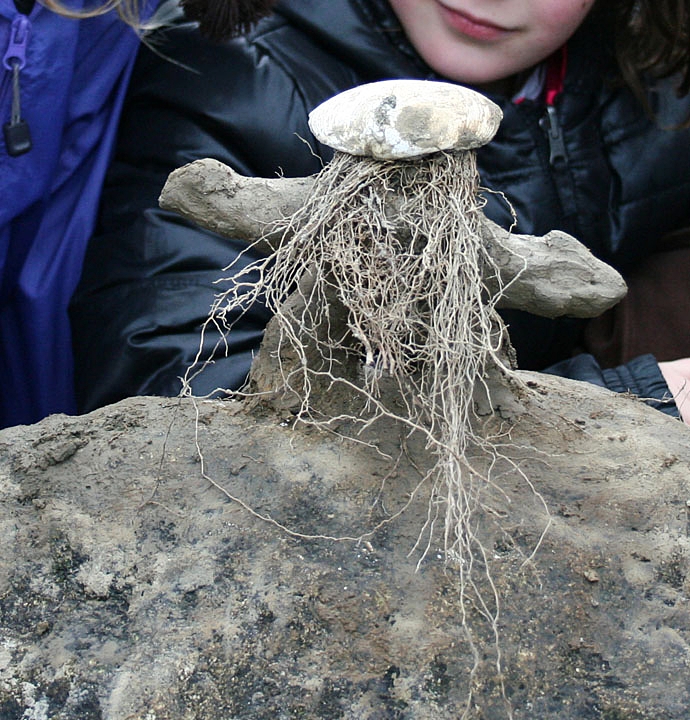Rather than business as usual, PTSD’s ICE Program kicked-off 2011 with an experiment:
Cancel all regular classes in favor of a week of intense focus on a particular subject.
During this amazing Project Week, I teamed up with teacher/consultant Daniel Molotsky to lead students, K through 8th grade, in a concentrated look at Patterns in Art and Nature. For four straight days we worked inside and out to explore environmental art and visual concepts, such as, pattern and line, accumulation, repetition, symmetry.
All the images in this post are rad student work.
Our days began with an introduction of a new concept, some discussion and a look at examples of the days’ idea from both visual art and nature. Students then spent time working on projects indoors.
These projects encouraged independent thought and work and introduced a particular design concept: repetition, symmetry, pattern. Then around lunch time we bundled-up and went outdoors to work on-site. Now students could get their hands (and knees) dirty and express what they were learning about environmental art. My take on it is that environmental art improves the artist’s relationship with nature. It is artwork that emerges from the essence of a particular place and is created entirely from available natural materials. And, most importantly, it is ephemeral; made to change and eventually disappear. The kids embraced these ideas--moving with grace and confidence they took their time getting to know the places–-woods, meadow, beach–-that we ventured to.
The future of the environment depends largely on this generation having a healthy relationship with the natural world. Environment-based education education expert David Sobel puts it this way:
“It’s good to have streams where kids can and obstruct the ecosystem; the nature of that play is more important, and worth it to the environment in the long term,” he says. . . . . “You can make the same argument about tree houses, which undeniably damage the tree, but that occasional damage to a tree is not as important as what children learn when playing in that tree.”
Without exception, the students were gentle and respectful in their interactions with the natural world. There is some unavoidable impact when taking twenty-some students out into the wild to make art. With this in mind we were sensitive to select work sites that were near trails or other spaces already frequented by people/
I came across this David Sobel quote while reading Last Child in the Woods, by Richard Louv. Louv’s view is:
“Passion does not arrive on videotape or on a CD; passion is personal. Passion is lifted from the earth itself by the muddy hands of the young; it travels along grass-stained sleeves to the heart. If we are going to save . . . the environment, we must also save an endangered indicator species: the child in nature.”
I am happy to think the environment might benefit from kids who know it well. As I watched my students at their play/work/interaction with the natural world I see in them respect, understanding, and love. These children are the ones who grow up desiring to protect the environment. Even greater satisfaction came of witnessing the effect the great outdoors had on all of us-–making us happier, more-tolerant, creative and playful.
Again from Last Child in the Woods:
“Natural spaces and materials stimulate children’s limitless imaginations and serve as the medium of inventiveness and creativity observable in almost any group of children playing in a natural setting.” [Louv is quoting Robin Moore, a play and learning environments designer.]


